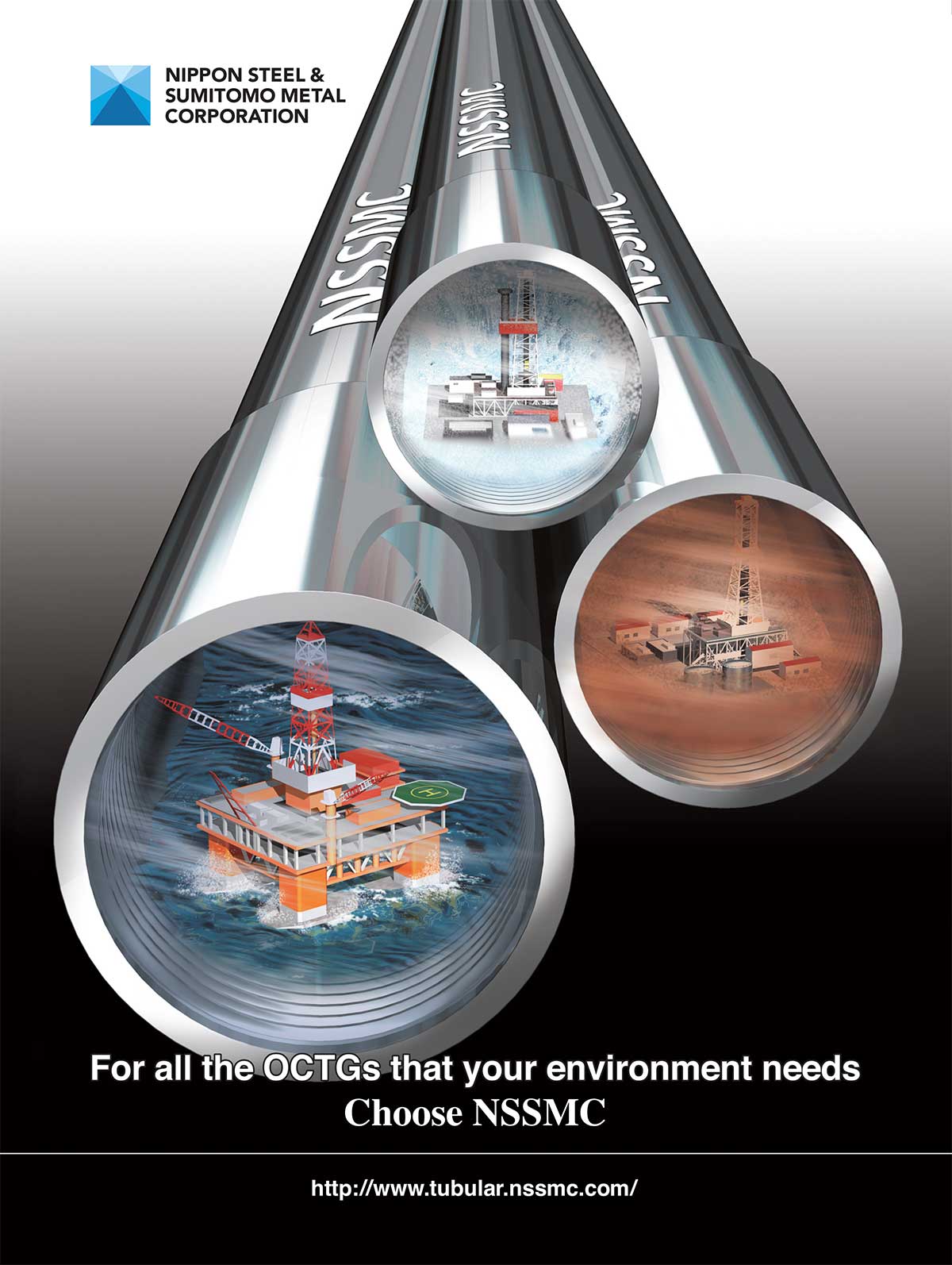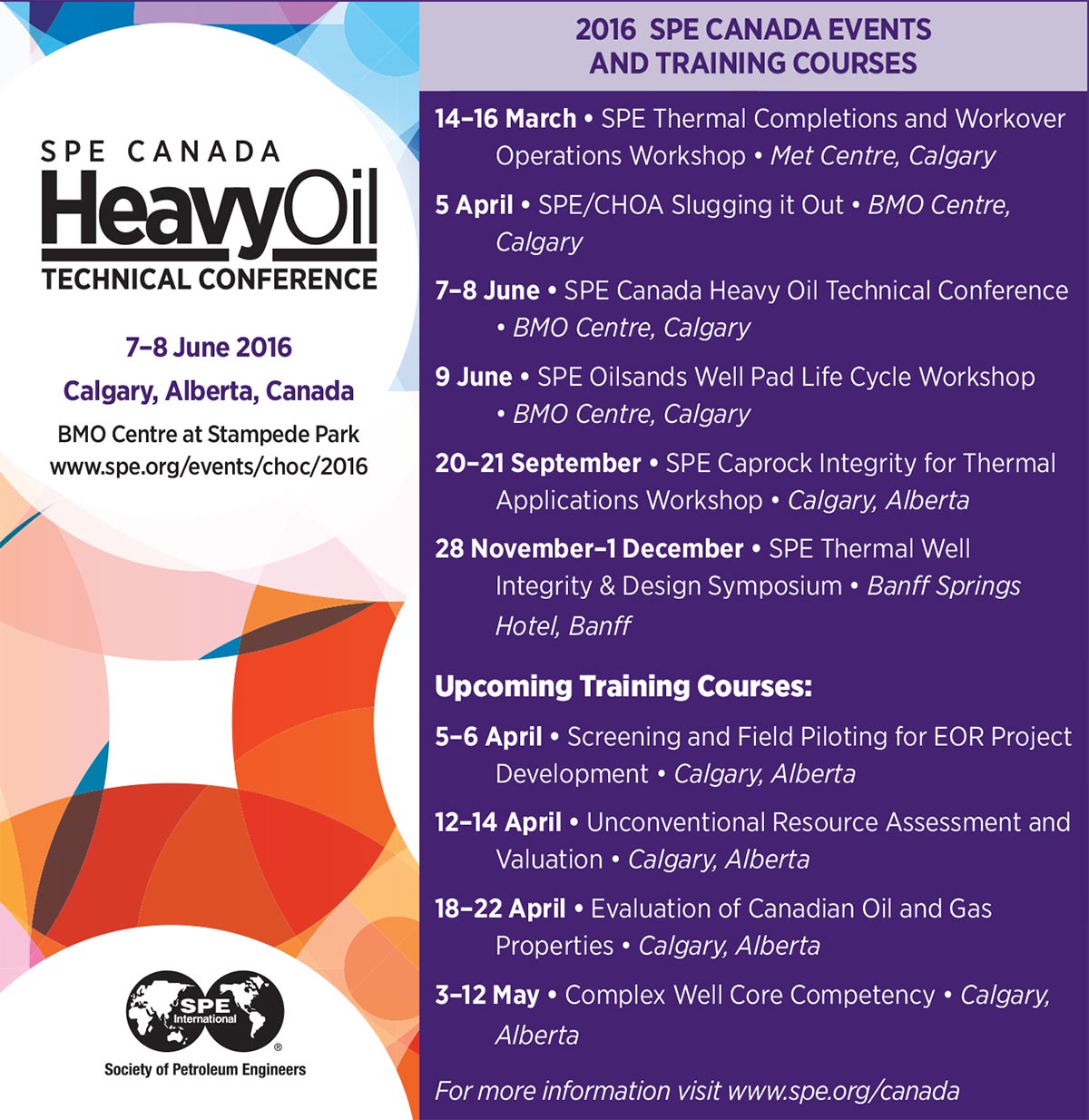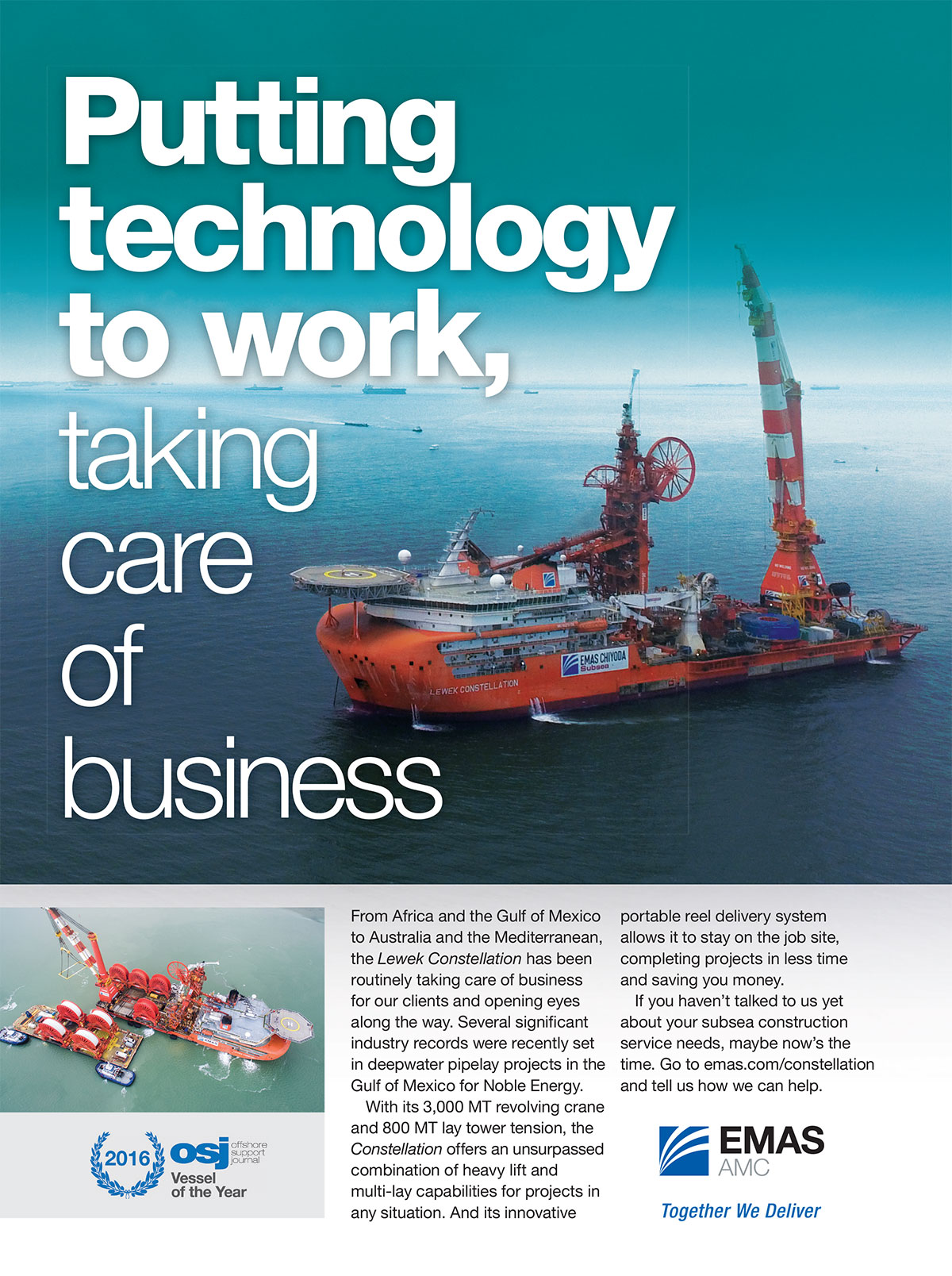A New Chapter Begins
This will be the final print issue of Oil and Gas Facilities. It is becoming an online-only publication. While the format in which you read the magazine will change, nearly everything else remains the same. It opens up a number of exciting new possibilities for usto serve you better with more frequent delivery of content in a web-friendly format that is easier to read and enables faster downloads.
A Deeper Look at Modularization in Facilities Construction
As operators look to reduce the on-site development time and cost for projects, they have begun adopting a modular approach to facility design, moving construction away from project sites and to the fabrication yards. While this approach may provide some benefit, it may not be the most efficient path to take.
How To Avoid Project Train Wrecks
The failure rate of capital-intensive megaprojects remains high when evaluated by cost overruns, schedule delays, and operational problems. Many of these project train wrecks are self-inflicted; seldom are they caused by a bolt out of the blue. Five major factors that can lead to failure are discussed.
Experimental Investigation of Three-Phase Low-Liquid-Loading Flow
H. Karami, C.F. Torres, E. Pereyra, and C. Sarica
An experimental study investigates the characteristics of three-phase stratified wavy flow in horizontal pipelines under low-liquid-loading conditions. The flow characteristics include wave pattern, liquid and water holdup, pressure gradient, and wetted-wall fraction.
Book Summary and Commentary: The Price of Oil
Oil is a commodity and its price varies with market forces as do all other commodities. But oil is different in that the value of oil produced is an order of magnitude greater than any other commodity. And the price swings are more dramatic than for any other commodity. In their book, Roberto Aguilera and Marian Radetzki address the price drivers that create this dynamic situation.
Underperforming Gas Scrubbers: How To Fix Them and How To Avoid Them
A case study illustrates how an inadequate sizing methodology hinders gas scrubber performance. The causes of excessive carry-over that contaminated downstream equipment are identified and a potential solution is presented for revamping the vessel. The benefits of using a more consistent design methodology are highlighted with the final equipment configuration, the estimated carry-over, and flow distribution through the vessel based on computational fluid dynamics.
Mature Oilfield Facilities Enhancement: Use of Two-Screw Multiphase Pumps To Stimulate Increased Well Production
In maturing oil wells, oil production is often restricted as reservoir pressure depletes and well back pressure from surface facilities remains the same or increases. Two case studies highlight the application of two-screw multiphase pump systems in the Caspian Sea and onshore Mexico to mechanically lower well back pressure, resulting in increases in oil production and extension of well life.
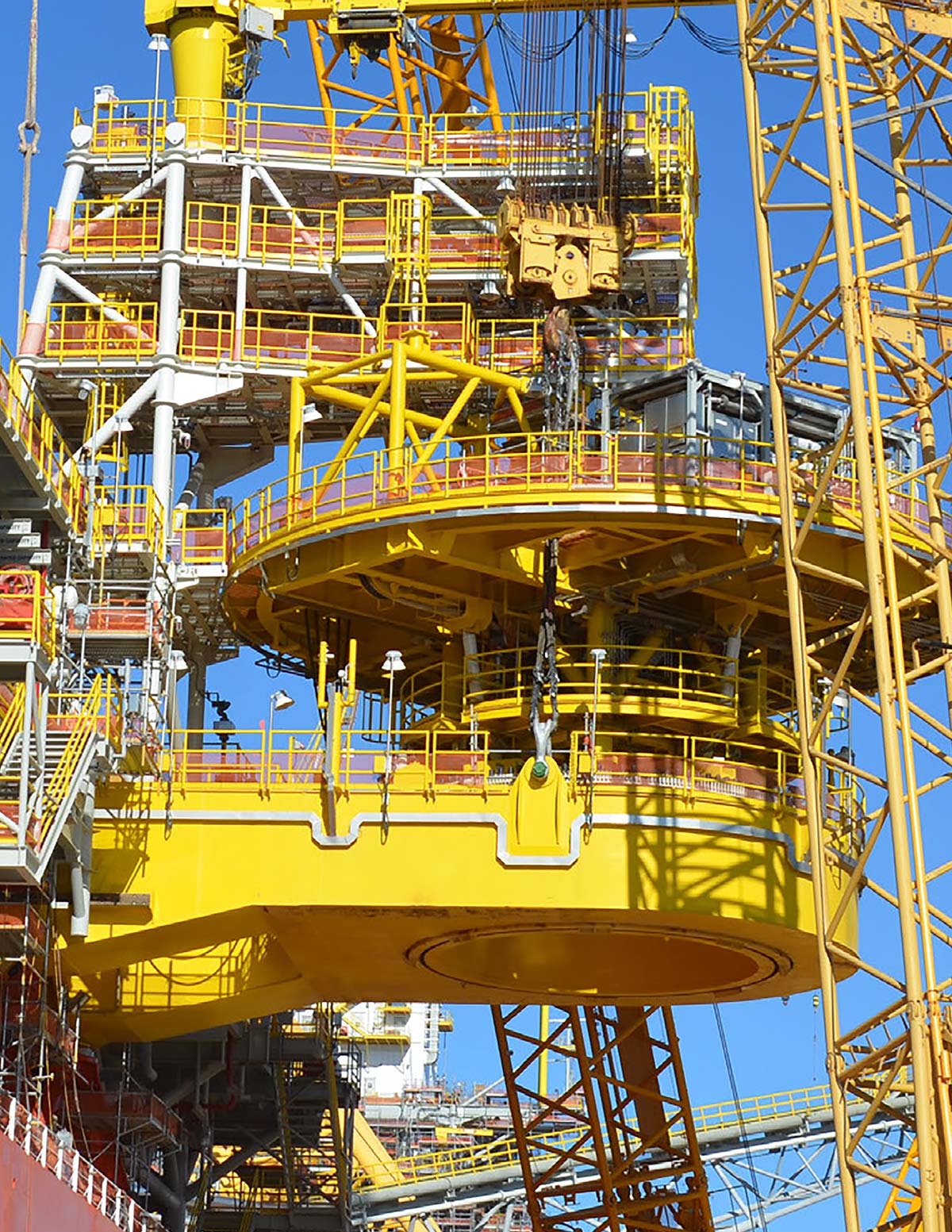
A riser turret module is installed on the Eagle Louisiana, a modular capture vessel (MCV). The module connects subsea equipment to the vessel’s topside processing equipment and, by providing a barrier from a subsea well, it is a key component in the vessel’s safety system. The first MCV was delivered in 2013 to help direct diverted hydrocarbons in the event of a subsea well blowout. Photo courtesy Marine Well Containment Company.
John Walsh, Cetco Energy Services
Paul Jones, Chevron
Kenneth E. Arnold, WorleyParsons
Joseph Lee, Process System Division, Cameron
Howard Duhon, GATE
Simon Richards, Consultant
Gerald Verbeek, Peer-Review Editor, Verbeek
Management Services
John Donnelly, Director, Magazines and Web Content
Pam Boschee, Senior Manager, Magazines
Stephen Whitfield, Oil and Gas Facilities Staff Writer
Alex Asfar, Senior Manager, Publishing Services
Craig W. Moritz, Assistant Director, Americas Sales and Exhibits
Mary Jane Touchstone, Print Publishing Manager
Laurie Sailsbury, Composition Specialist Supervisor
Anjana Narayanan, Editorial Manager
Craig Moritz, Assistant Director, Americas Sales and Exhibits, Tel: +1.713.457.6888,
Fax: +1.713.779.4216. Email: cmoritz@spe.org.
ADDRESS CHANGE: Contact Customer Services at +1.972.952.9393 to notify of address change or make changes online at www.spe.org.
SUBSCRIPTIONS: Oil and Gas Facilities is sent automatically to SPE members who designate Projects, Facilities, and Construction as their primary or secondary discipline. For institutional, corporate, and online subscription rates, go to www.spe.org/journalsubscribe.
OIL AND GAS FACILITIES (ISSN 2224-4514) is published bi-monthly in February, April, June, August, October and December by Society of Petroleum Engineers, 222 Palisades Creek Drive, Richardson TX 75080. Periodical Postage Prices are Paid at Richardson TX and additional mailing offices.
POSTMASTER: Send address changes to: Oil and Gas Facilities, PO Box 833836, Richardson TX 75083-3836.
SPE Publications: SPE is not responsible for any statement made or opinions expressed in its publications.
EDITORIAL POLICY: SPE encourages open and objective discussion of technical and professional subjects pertinent to the interests of the Society in its publications. Society publications shall contain no judgmental remarks or opinions as to the technical competence, personal character, or motivations of any individual, company, or group. Any material which, in the publisher’s opinion, does not meet the standards for objectivity, pertinence, and professional tone will be returned to the contributor with a request for revision before publication.
SPE accepts advertising (print and electronic) for goods and services that, in the publisher’s judgment, address the technical or professional interests of its readers. SPE reserves the right to refuse any advertising it considers to be unacceptable.
COPYRIGHT AND USE: SPE grants permission to make up to five copies of any article in this journal for personal use. This permission is in addition to copying rights granted by law as fair use or library use. For copying beyond that or the above permission: (1) libraries and other users dealing with the Copyright Clearance Center (CCC) must pay a base fee of USD 5 per article plus USD 0.50 per page to CCC, 29 Congress St., Salem, Mass. 01970, USA (ISSN0149-2136) or (2) otherwise, contact SPE Librarian at SPE Americas Office in Richardson, Texas, USA, or e-mail service@spe.org to obtain permission to make more than five copies or for any other special use of copyrighted material in this journal. The above permission notwithstanding, SPE does not waive its right as copyright holder under the US Copyright Act.
Canada Publications Agreement #40612608.

It is with the future in mind that I tell you this will be the final print issue of Oil and Gas Facilities. It is becoming an online-only publication. While the format in which you read the magazine will change, nearly everything else remains the same. We’ll continue to deliver content that is useful in the daily work of facilities engineers along with new products of interest, people news, and more.
Our new website will debut soon (we’ll be sure to let you know), and it will no longer simply be PDFs of articles from the magazine. It opens up a number of exciting new possibilities for us to serve you better with a web-friendly format that is easier to read and enables faster downloads. We’ll have printing options for those of you who prefer to read in hard copy, as well as an app coming soon that will let you download articles to read later on your tablet or phone.
SPE started Oil and Gas Facilities in 2012 to reach those in the projects, facilities, and construction (PFC) discipline with content they would value.
Moving online with a publication website that is more than PDFs gives us the opportunity to reach even more prospective members. We hope you will share our content with colleagues and help them to understand the benefits of being an SPE member.
We know that change can be hard. Those of us who started out working on print publications stumble a bit at the idea of not being able to hold our work product in our hands. But the world moves forward and so do we, remaining strong in our commitment to deliver you content that will educate, inform, and inspire changes in your own operations.
We are planning a June issue as our first online-only magazine and look forward to your feedback. OGF

Publisher, Oil and Gas Facilities
This column is a book review and commentary on The Price of Oil by Roberto Aguilera and Marian Radetzki. I highly recommend this book and the article they authored, “Climate Policy With Low Oil Prices,” in the February issue of JPT.
Aguilera and Radetzki predict a dramatic increase in shale oil and other tight oil production from about 40 million BOPD today to as much as 40 million in 2035. This incredible increase would set the market price in 2035 at the shale oil price, which they predict will then be between USD 40/bbl and USD 60/bbl.
The Reason for the Boom
Oil is a commodity and its price varies with market forces as do all other commodities. But oil is different in that the value of oil produced is an order of magnitude greater than any other commodity (4.8% of the global gross domestic product [GDP] in 2013). And the price swings are more dramatic than for any other commodity.
In their book, Aguilera and Radetzki address the price drivers that create this dynamic situation.
Because oil is difficult to replace in the short or medium term, the major demand sources are not much affected by price swings; hence a small shortage of oil can result in a large price increase. But over time, the world has been weaning itself from oil as shown by the rate of oil consumption as a function of GDP:
• In 1973, we consumed 1,185 bbl of oil per USD million of global GDP.
• In 2013, we consumed only 560 bbl of oil per USD million of global GDP.
Several possible sources of the volatility of oil are investigated by Aguilera and Radetzki. They conclude that the recent high prices were caused by supply limitations, which were caused largely by the ineffectiveness of state-owned oil companies. Whereas private oil companies are in business to produce oil and make a profit, state-owned oil companies are often forced to pursue more complex and diverse goals. These goals include social responsibility items such as employment, skill creation, foreign exchange generation, infrastructure development projects, etc. The top managers are often political appointees with little or no oil industry experience. And governments often overtax the companies, leaving inadequate funding to increase or even maintain production rates.
The North Sea has long been spoken of as an area that presents a huge opportunity for companies to become involved in decommissioning; however, in reality this has not yet happened. Decommissioning has moved extraordinarily slowly with very few removals being ordered by platform operators. Nevertheless, times are changing.
The oil price collapse will be the decisive change that forces operators to consider revising their standard operating model. Although less affected by the fluctuations in oil prices than fields that are at the presanctioning stage, it is the long-term nature of the current crash that will force operators to consider decommissioning work. Many of the platforms in the North Sea are late in life, operating long past their initial design expectations due to costly life-extension work. As a result, high oil prices are required just to break even, which was not an issue under the stable high oil price that existed from 2010 to mid-2014; but it has become a growing problem with the oil price in the low USD 30s/bbl (at the beginning of February).
No long-term oil price prediction is forecasting a quick return, and the oil price is still expected to be below USD 100/bbl in 2020. When field operators take into consideration the age of many North Sea assets, it becomes clear that it does not make financial sense to keep running them. Therefore, Douglas-Westwood (DW) expects a spate of abandonments by the end of the decade, with decommissioning concept selection starting at this time as well.
Much of the infrastructure in the North Sea is aged with some having been in place since the 1960s, meaning that maintenance costs are high and these tend to rise year-on-year. This will be of major concern for operators who have seen their budgets slashed repeatedly over the past 18 months, resulting in a tightening of their available operating expenditures.
Oil and Gas Facilities
Staff Writer
The process is far from a new one, but in recent years it has become a favorite. Independent Project Analysis (IPA) estimated that, in 2014, 57% of oil and gas projects with budgets of more than USD 15 million used a modular approach on some scope (Marton and Schroth 2015). However, it is not a perfect strategy, and before they fully embrace the modular oil field, companies must weigh its advantages and disadvantages. Is a modular approach really an improvement over a non modular approach? What are the effects on a project’s schedule and budget?
This feature examines the pluses and minuses of modularization, along with a look at how some companies are incorporating a modular approach into new technologies and facility designs.
For owners and operators, modularization can make the process of building facilities more manageable in an age of multi well systems. It allows the companies an opportunity to work around the challenges.
Matt Halker, founder of Halker Consulting, identified four primary issues that operators face with designing facilities in multi well sites. First, the geographies are different at each well site. Second, the system needs and production goals vary between operators. Third, equipment availability may differ significantly between regions.
Fourth, each facilities engineer may approach the design of an individual system in “unique and personal” ways. For example, an engineer may prefer laying pipe below ground instead of above ground, or may want storage tanks to fill from the bottom instead of the top.
“Certain parts of the oil field are primed for modularization—emission control systems, for example, are now mandated by law—but it may prove challenging to implement these changes industrywide,” he said.
To handle these issues, Halker said operators are changing their approach when necessary, taking advantage of modular opportunities in facility designs, equipment purchases, and construction plans. For example, an operator may base a facility design on the size of vessels available in local fabrication yards.
Walker said that a lack of industry standards for facilities design has slowed progress toward the full adoption of a modular approach for projects.
Traditionally, the main drivers for sizing gas scrubbers in the oil and gas industry have been performance requirements, process conditions, and project specifications. Unfortunately, too often space limitation, deadlines, and budgetary constraints seem to take priority over the sizing task, leaving the fundamentals of phase separation as just an afterthought in the design process. It is frequently overlooked that optimizing cost, delivery times, and weight is not the same as improving scrubber performance.
• Old-fashioned practices that rely on criteria-based design methodologies
• Lack of consideration of the system as a whole (effects on processing equipment downstream, and actual performance of upstream equipment)
• Compartmentalized design teams, piping engineers, process engineers, project engineers, and contractors working separately on their portion of the project
• Overconfidence in process guarantees provided by vendors without being able to validate them
There are a whole series of reasons for this poor performance, and oil and gas is not the only industry affected. One sees the same issues in public works projects, information technology projects, and mining, etc. Any and all capital-intensive industries suffer the same challenges.
As a consultant who has reviewed hundreds of projects, I see many of the same issues repeating themselves. Many of the projects that I review exceed USD 1 billion, which are often referred to as megaprojects. Fig. 1 shows the failure rate for these large projects.
Although there are lots of reasons why projects fail to meet their business objectives, they can be lumped into five major categories as follows:
1. Project objectives are not documented and owned by the project team.
2. There is a lack of planning and the project is not fully defined.
3. The management governance is poor.
4. The project team is not adequately staffed or integrated.
5. The project schedule is unrealistic.
Companies do projects based on business objectives, and those business objectives drive project objectives. Both of these objectives are the basic building blocks for planning and executing the project.
Some of the most challenged projects I have reviewed are those in which the business/management is disconnected from the core project team. Project team members will make thousands of decisions over the life cycle of a project, and it is critical that they understand why the project is being done to assure their decisions are aligned with the business. This is all the more critical when senior management is unclear as to why the project is being done. Fig. 2 illustrates that the lack of clear project and business objectives dooms a project to failure.
A relatively simple technique, project framing, helps to align management and all stakeholders early in the project life cycle, typically during the front-end loading (FEL) stage 1. A typical example of a project frame is shown in Fig. 3. During a facilitated session, stakeholders can determine what is included in the frame and the project scope, as well as what is out of the frame and not in scope. More problematic are the items on the frame for which there is no alignment among the stakeholders regarding inclusion or exclusion. It is better to work on these issues in FEL 1 than address them in FEL 3 when changes are very disruptive.
Optimizing Surface Facilities
Optimizing production starts with looking critically at both downhole strategies and surface facilities. Altering downhole strategies (artificial lift pumps, gas lift, chemical treatments, etc.) has often proven effective; however, increasingly challenging wells can preclude such interventions. Difficult well geometries, depths, pressure variations, gas volumes, fluid compositions, or flow profiles are examples of such challenges.
Influence is an important part of engineering. It is not enough to develop a brilliant design; you have to convince someone to build it.
There is a great deal written about influence. Robert Cialdini’s Influence: Science and Practice is a classic. Jay Heinrichs’ Thank You for Arguing is one of my all-time favorite books; it summarizes the Greek art of rhetoric. Nancy Duarte’s Resonate: Present Visual Stories That Transform Audiences is a brilliant book about designing PowerPoint presentations that move people. John Maxwell, one of the authors of Becoming a Person of Influence, has built a company on the ideas of servant leadership and influence.
The book is structured around this intriguing metaphor:
The mind is divided like a rider on an elephant.
The elephant is intuition, the rider is reason.
The rider is there to serve the elephant.
Kahneman’s (2011) discussion of thinking is useful. The mind comprises two systems: System 1 is an automatic, unconscious system, and System 2 is an effortful, conscious system. A bias identified in System 1 is that this thinking answers questions easier than the questions asked.
The collapse of oil prices has sent a shudder through the industry over the future of high-capital, major projects. However, red flags over capital expenditures (capex) had already been waving, and companies began attacking the problem several years ago.
At a strategic dialogue on technology, major projects, and raising capital efficiency at IHS CERAWeek in Houston on 23 February, panelists discussed the numerous steps their companies are taking to achieve large-scale permanent, in addition to cyclical, capex reductions on major projects.
As a business consultant, IHS is examining the role that technology can play in reducing capex and gave several examples of how companies are doing so.
• Selecting alternative project concepts, such as subsea instead of surface (offshore) development.
• Understaffing, in which facilities are designed to be staffed by as little as 25% of a comparable conventional facility’s workforce, or in some cases to be unstaffed.
• Adopting modular design and construction or adding small mobile process units to handle project expansions.
The examples are among a number of successful cost-reduction strategies implemented within industry “pockets of excellence,” Jacobs said, “but by no means are these standard practice. The challenge that the industry faces is how do you get to widespread adoption of some of these?”
With the continual development of new technologies aimed at making exploration and production more efficient, oil and gas projects have become troves of data.
For facilities engineers, design and construction teams, operators, and production managers, the data are essential in creating a digital ecosystem that can help them build more reliable platforms and facilities in the future. Information management is a significant challenge, but it provides an opportunity for improved project performance, an expert said.
In a webinar hosted by the SPE Gulf Coast Section Projects, Facilities, and Construction Study Group, Jim Crompton discussed the ways in which effective use of data may improve the efficiency and reliability of facility management. Compton is the managing director at Reflections Data Consulting and a former senior adviser for upstream information technology at Chevron.
One of the key objectives operators face in managing facilities is the delivery of capital projects at a faster speed with an improved quality of production and lower construction costs. In addition, they must deal with a greater demand for improved sustainability and risk management under increasing regulatory pressure. But the increasing complexity of facilities design, poor asset information management, and the prohibitive costs of systems integration make these objectives difficult to achieve.
With the oil and gas industry still in the midst of a financial downturn, companies are looking for efficiencies to exploit in their operations. As the cost to source, transport, store, treat, and dispose of water remains relatively high, water management programs will become a greater priority in the coming year, an expert said.
At a presentation hosted by the SPE Gulf Coast Section Water and Waste Management Study Group, Laura Capper discussed the low-cost developments in water management that the industry should notice in the upcoming year. Capper is the president of CAP Resources, a Houston-based oil and gas consultancy.
“If I was an operator, I’d say it’s more important to really manage my water management costs because it’s a bigger part of the overall cost basis compared to a year ago or a year-and-a-half ago. If you’re a service provider, you can argue that this is your time to really keep your eye on the ball because this is such a significant part of your development costs,” Capper said.
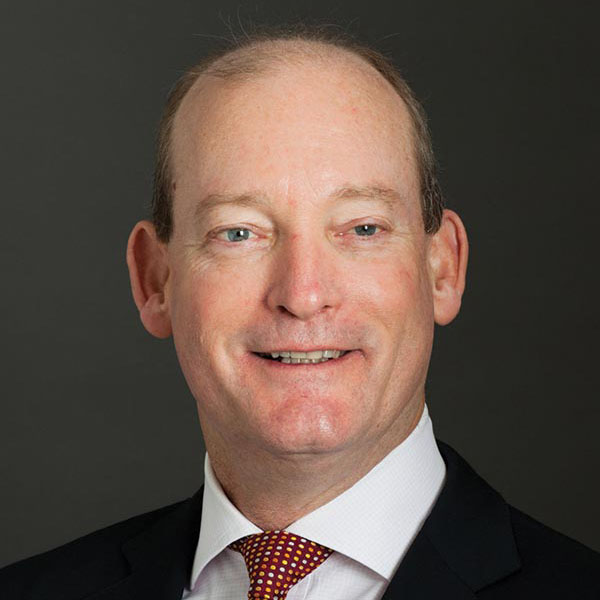
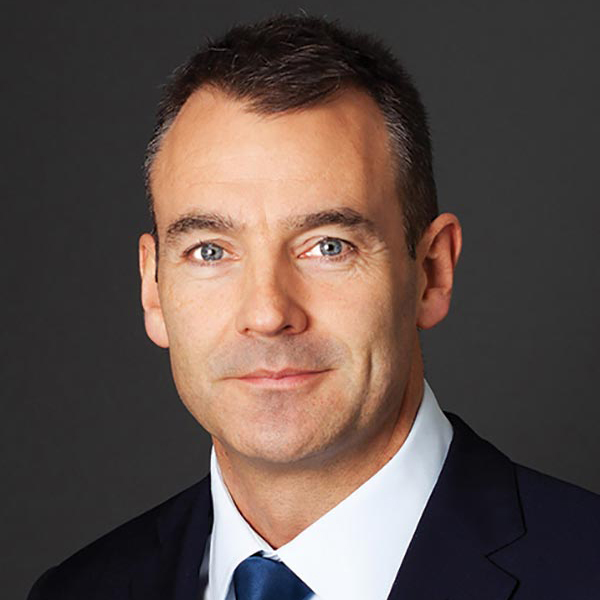
BP promoted Lamar McKay to deputy group chief executive and Bernard Looney to chief executive. McKay’s responsibilities will include strategy and long-term planning, safety and operational risk management, technology, and corporate governance.
He had previously served as the company’s upstream chief executive since 2013 and has been on its executive team since 2008, a year before his appointment as chairman and president of BP America. McKay started his career in 1980 with Amoco and held a range of technical and leadership positions before joining BP. Looney has been chief operating officer (COO) of production in the upstream segment since 2013. He joined BP in 1991 as a drilling engineer, holding positions in the UK North Sea, Vietnam, and the US Gulf of Mexico before moving to executive roles within the company.
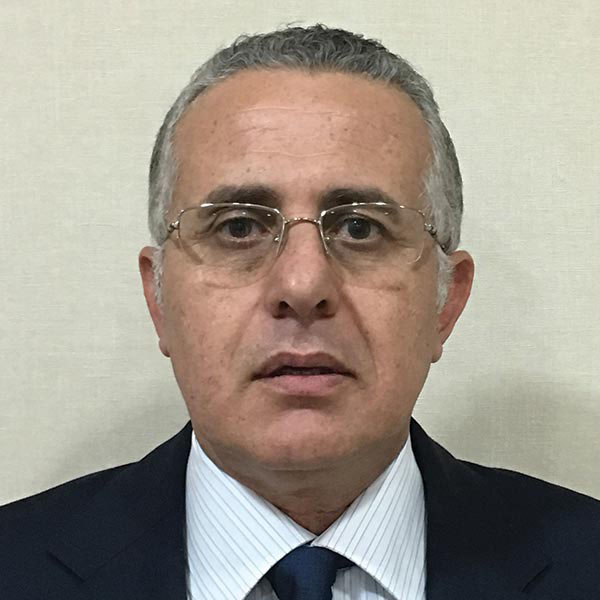
Ahmed Aboulfotouh was named general manager of AlMansoori Production Services at AlMansoori Specialized Engineering.
He has more than 29 years’ experience in the oil and gas industry, serving in senior management roles at multinational organizations based in Egypt, Pakistan, Libya, and the United Arab Emirates. Before joining AlMansoori, he worked at Weatherford as a regional manager for testing and production services in the Middle East and North Africa. He holds a degree in mechanical engineering from Alexandria University.
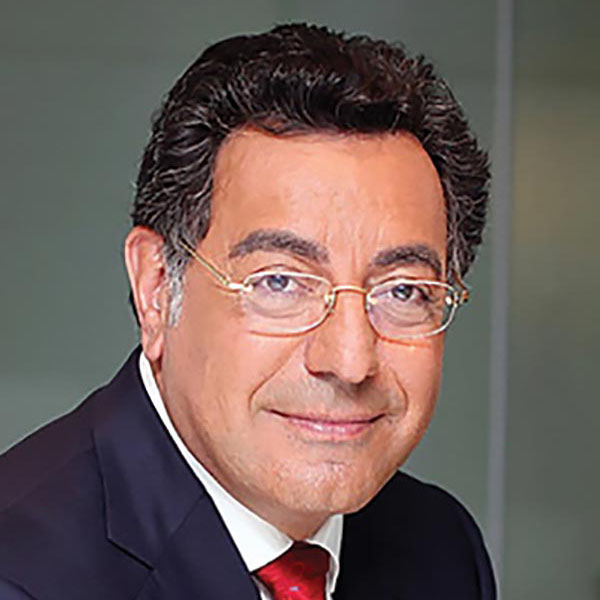
Samir Brikho stepped down from his position as chief executive officer (CEO) at Amec Foster Wheeler.
Brikho had been Amec’s CEO since 2006, overseeing the company’s USD 3 billion acquisition of Foster Wheeler in 2014. Prior to joining Amec, he served as chief executive at ABB Lummus Global, head of the power systems division at the ABB Group, and was a member of the Swiss group executive committee at ABB. He holds an MS in thermal technology from the Royal Institute of Technology in Stockholm.

OPITO appointed Graham Gall as managing director.
Gall was previously managing director at Falck Safety Services. He has 25 years of experience in the energy industry and in aviation, holding a number of international leadership positions, including a stint as standards and approvals director for OPITO’s business in the UK North Sea.

Seamless High-Pressure Pumps
Winner Engineering’s Hydra-Cell D10 Series seamless pumps (Fig. 1) operate at discharge pressures up to 1,500 psi. Used for a wide range of processing applications, the pumps have a flow capacity of 4¼ gal/min with a motor speed of 790 rev/min when performing at the maximum pressure rating. The pumps’ seamless design and spring-loaded, horizontal, disk check valves allow them to handle viscous fluids and abrasive particulates up to 500 microns in size.
For more information, visit www.wannereng.com.

Gas Chromatograph and Mass Spectrometer
Shimadzu’s single quadrupole GCMS-QP2020 gas chromatograph and mass spectrometer (Fig. 2) uses patented Advanced Scanning Speed Protocol technology, allowing scans of samples at high speeds without sensitivity loss or spectral distortion. The quadrupole mass filter is able to obtain accurate mass assignments and is equipped with a pre filter to reduce the influence of contamination on the main filter. It has a high-sensitivity ion source and ion optics to enhance ionization and transport efficiency, and its ecology mode reduces the costs associated with power and carrier gas consumption.
For more information, visit www.ssi.shimadzu.com.
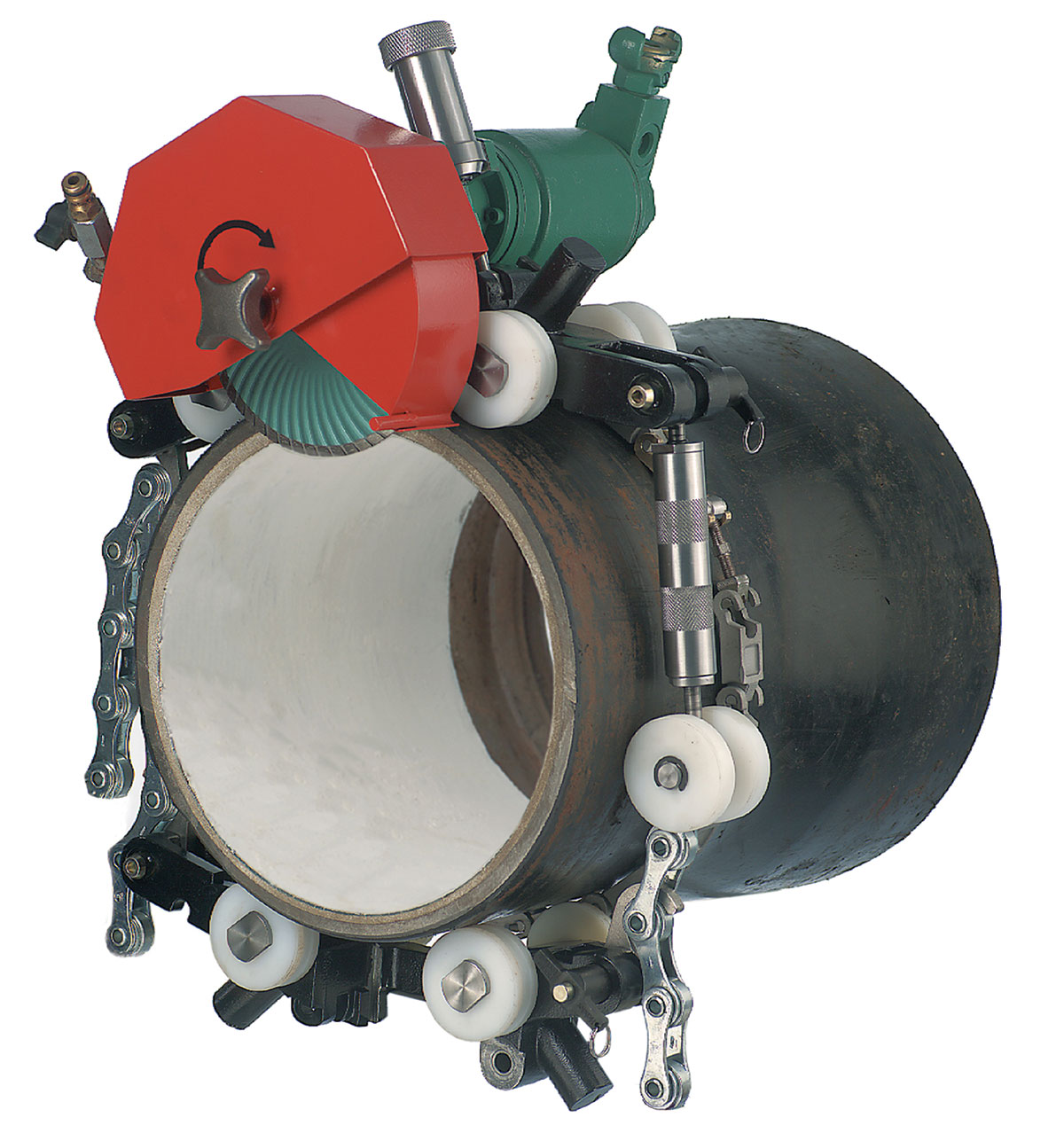
Pneumatic Pipe Cutter
The Model 5 8002 7000 pipe cutter from CS Unitec (Fig. 3) cuts and bevels pipes of diameters ranging from 12 in. to 63 in. and wall thicknesses ranging from 0.25 in to 2 in. It is a two-speed pneumatic machine that operates at 1,800 rev/min for cutting and 350 rev/min for low-speed/high-torque beveling. The machine cuts ductile iron, nonferrous metal, polyvinyl chloride, plastic, and cement pipes. It bevels 40°, 60°, and 90° angles with optional blades for on-site weld preparation. The machine operates on an air volume of 77 ft3/min at 90 psi air pressure. It is ATEX-certified under Class II 2 GcT6 and can be used in industrial zones where flammable gas, vapor, mist, and dust may be present and where surface temperatures do not exceed 185°F.
For more information, visit www.csunitec.com.
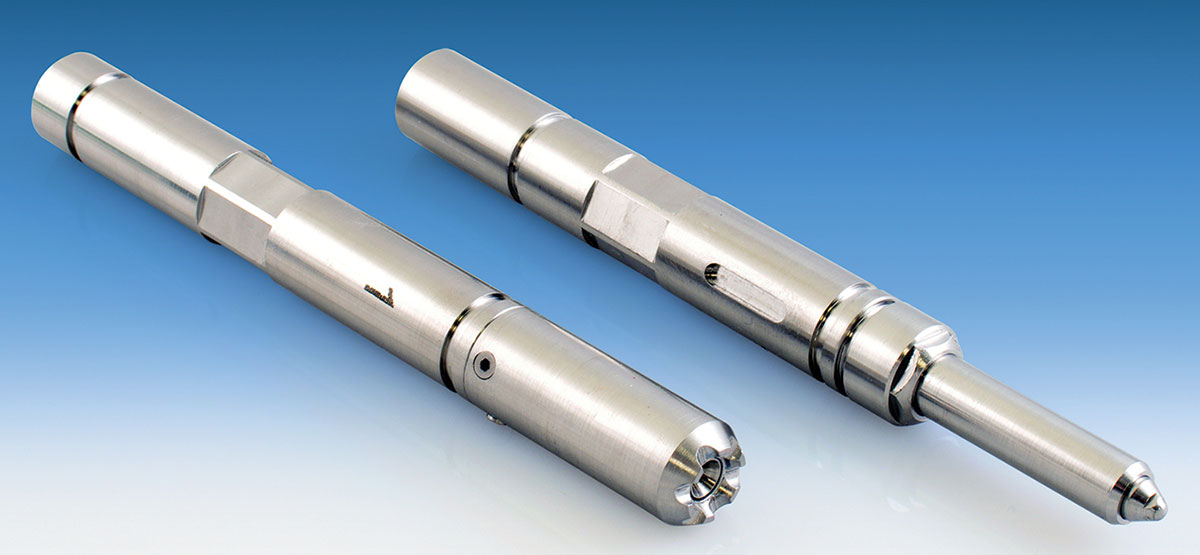
Subsea HP/HT Connector
AMETEK’s Elite Series Wet-Mate high-pressure/high-temperature connector is designed to operate in subsea oil and gas environments. The connector (Fig. 4) is 15.8 mm in diameter and has been functionally tested to 1,034 bar and temperatures as high as 150°C. It features a patented design in which concentric contacts are individually sealed within pressure-balanced, oil-filled plug and receptacle connector housings. That configuration protects both the plug and socket contacts from the external seawater environment and ensures repeated subsea mating capability at extreme pressures and temperatures.
For more information, visit www.ametek.com.
Comodoro Rivadavia
SPE Mature Field Management
as the Key for Production Optimization
Kuala Lumpur
SPE Sand Management:
Meeting the Industry’s Immediate
and Long-term Needs
Almaty
Revitalization of Mature Field Development: Revealing Hidden Opportunities
Colorado Springs
SPE Distributed Fiber-Optic Sensing
For Well, Reservoir, and Facilities Management
Calgary
SPE Oil Sands: Competitive
Strategies for In-Situ Well Pad Development
Stavanger
SPE International Conference and Exhibition on Health, Safety, Environment, and Social Responsibility: Sustaining Our Future Through Innovation and Collaboration
Houston
Offshore Technology Conference
Aberdeen
SPE Oilfield Corrosion Conference
Aberdeen
SPE Oilfield Scale Conference
Anchorage
SPE Western Regional Meeting
Calgary
SPE Canada Heavy Oil Technical Conference
Port of Spain
SPE Trinidad and Tobago Section
Energy Resources Conference
Lagos
SPE Nigeria Annual International
Conference and Exhibition
Beijing
SPE Asia Pacific Hydraulic Fracturing Conference
Aberdeen
SPE Intelligent Energy Conference
Dhahran
SPE/SAS Annual Technical Symposium and Exhibition
Buenos Aires
SPE Argentina Exploration and
Production of Unconventional Resources
San Antonio
SPE Processing Facilities of the Future

Experimental Investigation of Three-Phase Low-Liquid-Loading Flow
H. Karami, C.F. Torres, E. Pereyra, and C. Sarica
An experimental study investigates the characteristics of three-phase stratified wavy flow in horizontal pipelines under low-liquid-loading conditions. The flow characteristics include wave pattern, liquid and water holdup, pressure gradient, and wetted-wall fraction.

I hope you will find this paper of interest, but most of all, I hope that this section encourages you to submit a paper for peer review. OGF
Verbeek Management Services
Associate Editors
Williams Chorines, Inexertus
Galen Dino, Dino Engineering
Sudhakar Mahajanam, ConocoPhillips
Would you like your paper considered for publication in Oil and Gas Facilities? Find out if your paper is a candidate for peer review and learn how to submit your paper at www.spe.org/authors/peer.php.
www.spe.org/journals



